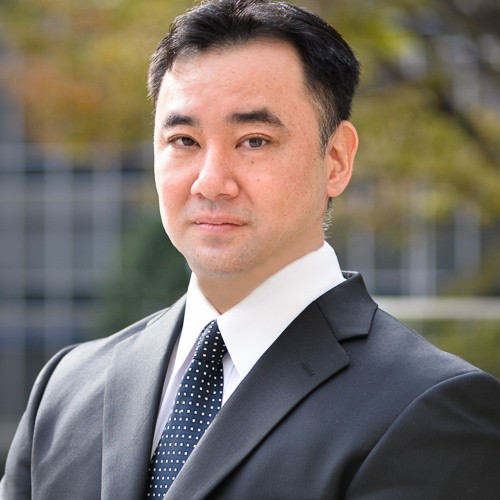An overview on the regulatory regime governing fund managers engaging in direct capital raising activities in Japan.
Introduction
With the prevailing low interest rates, Japanese asset allocators are increasingly turning to offshore fund managers for target returns, resulting in Japan remaining a key jurisdiction for fund managers to raise capital.
However, offshore fund managers often find it difficult to grasp the particularities of Japan’s regulatory regime surrounding the solicitation and marketing of fund interests to its investors.
Below, we provide investors with an overview of Japan’s regulatory framework regarding the private placement of fund interests.
The Financial Instruments and Exchange Act of Japan
The Financial Instruments and Exchange Act of Japan (the FIEA) governs the various financial instruments business activities, including the marketing of fund interests.
The FIEA governs four primary financial instruments business registrations:
Type 1 Financial Instruments Business Operator (a Type 1 Dealer);
Type 2 Financial Instruments Business Operator (a Type 2 Dealer);
Discretionary Investment Management Business Operator (a DIM); and
Investment Advisory and Agency Business Operator (an IAA)
Each registration allows a certain scope of activities. To understand the differences, we need to understand the two categories of securities under the FIEA.
Securities defined under Article 2, Paragraph 1 of the FIEA (Paragraph 1 Securities) are financial instruments such as shares of capital stock companies, bonds, units of investment trusts, shares of investment corporations, warrants and commercial paper.
Paragraph 2 Securities are those defined under Article 2, Paragraph 2 and include beneficial interests of a trust, interests in limited partnerships, limited liability partnerships and limited liability companies.
Any entity wishing to market securities must register with Japan’s Financial Services Agency (the JFSA) as either a Type 1 or Type 2 Dealer permitted to market Paragraph 1 or Paragraph 2 Securities respectively.
The DIM permits the registrant to engage in a discretionary investment management business, which refers to the making of trades or investment decisions. This registration has increasingly been used as an indirect way to raise capital from investors, especially pension funds.
The IAA allows the holder to conduct two activities – providing non-discretionary investment advice to a third party about the value of securities and investment decisions; and acting as an intermediary or agent for a party entering into investment advisory or investment management agreements.
Private placement of fund interests in Japan
The regulations for Paragraph 1 and Paragraph 2 Securities differ significantly.
- Any marketing of Paragraph 1 Securities can only be undertaken by a Type 1 Dealer. The FIEA allows four models of private placement:
(i) Small Number Private Placement - Up to 49 solicitations over a six-month period.
(ii) Hybrid Private Placement - Up to 49 solicitations, excluding solicitations to qualified institutional investors (QIIs), over a six-month period.
(iii) QII Private Placement - An unlimited number of solicitations to only QIIs.
(iv) Professional Investor Private Placement - An unlimited number of solicitations to only professional investors.
The exact model of the private placement will impact the specific disclosures and transfer restrictions which apply.
Before any marketing activities by a Type 1 Dealer, the fund is required to make a filing to the JFSA under the Act on Investment Trusts and Investment Corporations of Japan (the ITIC Notification). This summarises the fund’s material terms, the Japan offering and its various service providers. The contents of the ITIC Notification are strictly for the JFSA’s reference and are not available to the public.
The marketing of Paragraph 2 Securities can only be undertaken by Type 2 Dealers. The definition of a private placement varies significantly compared to Paragraph 1 Securities as the FIEA defines a private placement of Paragraph 2 Securities as any offering which has 499 or fewer Japan subscribers.
The ITIC Notification is not necessary for offerings of Paragraph 2 Securities
Common exemptions
There are certain exemptions available to offshore fund managers.
1. The Foreign Securities Firm Exemption
Article 58-2 of the FIEA (the Foreign Securities Firm Exemption) allows a foreign securities firm to engage in limited marketing without being registered as a Type 1 or Type 2 Dealer. Restrictions vary depending on the type of investor targeted.
The firm cannot engage in any onshore marketing activities to most types of investors, and can only engage in offshore marketing activities into Japan (calls or e-mails).
For Paragraph 1 Securities, the fund must submit an ITIC Notification.
2. The Article 63 Exemption
For the marketing of interests in limited partnerships to Japan investors, a common exemption is the "Special Permitted Businesses directed at Qualified Institutional Investors" under Article 63 of the FIEA (the Article 63 Exemption).
This permits the general partner of a limited partnership fund to engage in: (i) ‘self-offering’ of the limited partnership interests; and (ii) ‘self-management’ of the assets of the Japan limited partners; and to be registered as a Type 2 Dealer or as a DIM, respectively.
However, as of 1 March 2016, the Article 63 Exemption was significantly overhauled to raise the requirements of general partners operating under this exemption.
Conclusion
Despite Japan’s complex regulatory framework, there have been significant capital-raising activities there in the last few years. Investors and investment allocators are increasingly looking to global managers to achieve target returns and Japan will continue to be a key allocator for investment funds. It is essential that offshore fund managers know how to navigate the regulatory landscape.

